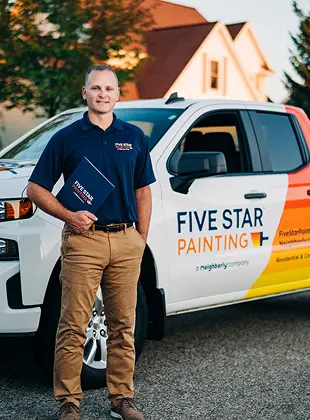As a professional painter in Virginia, my job is to first estimate what a particular job might cost.
Painting is a different ball game than most other home services. Everyone thinks they can paint—just watch how fast the color goes up on those done-in-a-day home-makeover shows. Grab a brush, a roller, and a couple of gallons of latex, and you're all set.
The truth is, it is easy to paint poorly. There's no substitute for learning the proper steps, taking time to do the job right, and improving your technique as you go.
Estimates will vary in ranges drastically. Reasons will vary, typically the lower quotes come from painting contractors who are not licensed and insured, this is a huge detriment to the homeowners if they are not.
There are also people who do not know how to properly prepare and apply paint, understand sound business practices, nor do they participate in uniformly applying the industry standards to the work they perform.
The Signs of a Bad Paint Job
As a consumer, it is sometimes hard to know if you have had a good or bad paint job. Unfortunately, it could take a year or longer to realize that you have had a bad paint job.
Below, we list some of the signs of a bad paint job. At the end, we highlight the importance of hiring licensed, insured, and reputable painters.
Sign #1: Bad Customer Service
The first indication of a bad paint job will be the customer service the contractor provides.
This includes the service received from the initial call and the estimate. It also includes the service provided during the first few days on the job. If you are not feeling comfortable, it’s likely the end result won’t be terrific
A good job starts with the initial call - consider the following:
- How was your call handled; was there somebody there to receive your call?
- Was the person that provided the estimate professional?
- Did they provide all details of the job from the preparation methods, number of coats included, type of paint that will be used, and any special requirements in writing?
- Did they address your concerns?
Some of the key things they will discuss during the estimate process is how they will handle the following issues:
- How will the holes and cracks in the wall be addressed?
- Are they addressing their sanding process?
- What is their method for primer and paint, and how many coats?
- They will discuss all aspects of the room (moldings, trim, furniture movement, etc).
- They will discuss their cleaning process and the importance of specific steps they take.
Sign #2: Bumps and Bubbles
If you notice any bumps or bubbles in the paint on your walls or ceiling, that's a sign that something isn't right.
These irregularities are often caused by poor preparation of the surface prior to painting, or by a lack of attention to detail during the painting process.
If you see bumps or bubbles, it's important to address them right away, as they can eventually lead to flaking or peeling paint.
Sign #3: Uneven Color
A high-quality paint job should have consistent color throughout, with no areas that appear lighter or darker than others.
If you notice any uneven color on your walls or ceiling, it's likely that the painter didn't apply the paint evenly or that the surface wasn't properly prepared. This can be particularly noticeable with darker colors but can happen with any shade.
Sign #4: Visible Brush or Roller Marks
While some brush or roller marks are unavoidable, a professional painter should be able to apply paint in a way that minimizes these marks as much as possible.
If you notice visible brush or roller marks on your walls or ceiling, it's a sign that your painter may not have been as skilled as they should have been. This can be an indication of rushed work, lack of experience, or lack of care.
Sign #5: Drips and Runs
Drips and runs are a clear sign of a bad painting job.
These imperfections are typically caused by applying too much paint in one area, or by not being careful during the application process. Drips and runs can be particularly noticeable around windows and doors, where excess paint can collect and harden.
If you notice any drips or runs, it's important to address them right away before they dry and become more difficult to fix.
Sign #6: Peeling or Flaking
The ultimate sign of a bad painting job is peeling or flaking paint.
This can happen if the surface wasn't properly prepared prior to painting, if the wrong type of paint was used, or if the painter didn't apply enough coats of paint. Peeling or flaking can be very expensive to fix, so it's important to catch it early and address it right away.
Avoid Regret by Hiring Professional, Licensed House Painters
While it can be tempting to try and save money by hiring a cheap painter, a bad house painting job can end up costing you much more in the long run.
By knowing what to look for, you can avoid hiring a bad painter and ensure that your house looks beautiful for years to come.
Remember to always check for bad customer service, bumps and bubbles, uneven color, visible brush or roller marks, drips and runs, and peeling or flaking paint.
A remedy is to verify licenses and references - check out our other blog to learn why it’s important your painter is licensed and insured. Demand all details are provided in writing and only deal with known professionals.
Why Choose Five Star Painting of Manassas?
At Five Star Painting of Manassas, we’re licensed (License: #2705183664) and insured for your peace of mind. We also back all of our painting services with a two-year Done Right warranty.
And to help safeguard your investment, we perform a walk-through at the end of your project to ensure you’re 100% satisfied with our work.
If you’re searching for trusted painters, you’re welcome to review our completed projects and testimonials to see why our customers love our services.


